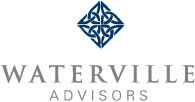For Income Replacement
For those clients who want a guaranteed income flow, or need income replacement because their earnings ability has been seriously diminished or completely eliminated because of their injury, a structured settlement may be the best strategy.


The conventional wisdom may be that if the settlement is large enough, your client should be able to just live off of the proceeds. However, how will they actually generate a cash flow to live?
Bonds
This is not an optimal “income flow” strategy. Bonds have risk, especially municipal bonds. Moreover, bond holders need to hold onto them for long periods of time in order to generate any semblance of a decent return. The first real payment may not take place until after 5 years… at a bare minimum.
Savings Accounts
Most settlement recipients will try and set-aside a large amount of money in the form of cash and strip out money as they need it. However, after paying for large ticket items such as a house and car, most people have monthly expenses that need to be taken care of in 30 day increments. Therefore, if they follow this income flow strategy, they will need to be constantly withdrawing funds from savings to live a normal life. Savings should only be for emergencies. Savings should be large and liquid.
Equities “Stock Market”
As discussed in a ground-breaking White Paper analysis by James Otar, the average equity investor earned just 1.87%. Many attribute this to behavioral risk, such as entering the market at a high point, trading too often, trading too early, trading when the market is dropping, and trading with emotions.
The reason for this low rate is because of the enormous impact/importance of when you enter the market and when you pull funds out.
If your client needs income flow, he/she will be constantly stripping-out funds. Their portfolio has now reached the “Distribution phase.” Since your client no longer has a steady income stream, they have no other choice.
Equity based portfolios can be a very good thing. The market can yield healthy returns, as long as an investor holds tight. For example, the S&P returned 8.35% over a 20 year period from 1988-2008.
Optimal Strategy
The optimal portfolio is one that provides funds for everyday living needs, while maintaining funds for an accumulation portfolio.
The guaranteed periodic payments from a structured settlement provide the perfect opportunity for a client to create an income flow, while still maximizing the benefits associated with an accumulation portfolio. In essence, the “structure” gives the investor the necessary income flow for ongoing needs, while providing the freedom to hold-tight and realize the gains from their accumulation strategy. The combination of these two strategies is prudent and powerful.
